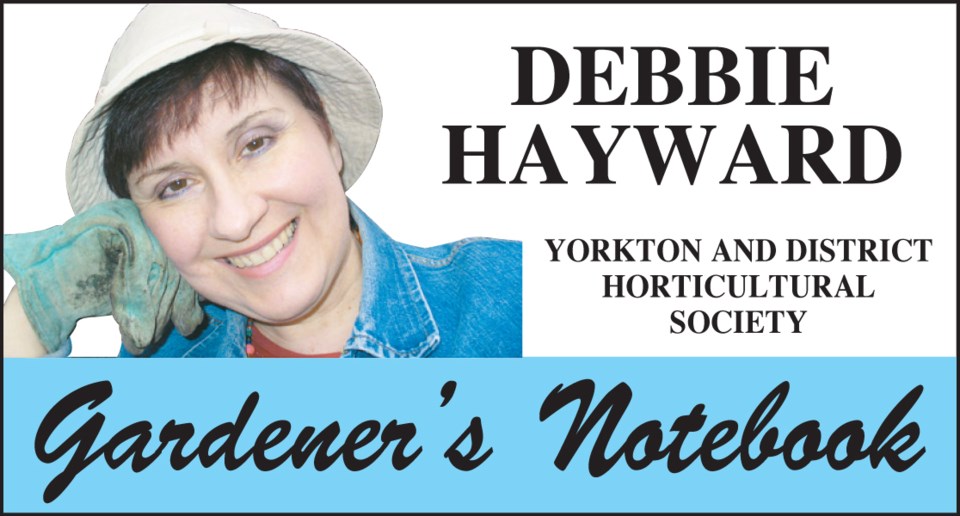Thank you to everyone who came out to the Yorkton and District Horticultural Society Spring Plant and Bulb Sale last week. Thank you to everyone who donated plants, to those who helped set up and work at the sale, and of course, to all our gardening friends who came to buy new plants! We hope you found some exciting new garden treasures!
Planting is now in full swing, and it’s the time when we really take a look at our garden soil and wonder what we can do to improve its productivity. Adding manure helps by introducing helpful nutrients to the soil, as well as helping to make it lighter and more aerated, but one of the best recipes for healthy soil is to add compost.
Compost is the brown gold of any garden, bringing priceless microorganisms to our soil, and it’s easy to do. First, forget those myths that we may have in our minds about compost. No, it is not difficult to make. No, it does not require large specialized bins. No, it does not smell.
Compost is a mixture of “brown” and “green” components. The brown components are usually dried leaves and layers of soil. The green components are all kinds of kitchen scraps such as vegetable peels, fruit peels, and eggshells, and coffee grounds. If we were talking about larger compost bins, we’d include grass clippings in this list. But today let’s focus on making compost on a small scale, in a bin, a pail, or even just a small pile in a corner of your yard.
The key to making compost is to layer the brown and the green so that air and moisture is going through the mixture as it breaks down. Once we have a layer of the green items, sprinkle a layer of brown on top. A sprinkling of water will help to get the compost started. We don’t want it to be soupy, but it should be slightly damp. Make the green items roughly the same size to maintain uniform decomposition. Once a week or so, stir this mixture up. And guess what? In time we’ll have beautiful compost!
If you don’t have space for a big compost bin, check out how to make a mini-compost bin, there are all kinds of instructions online. You can make a compost bin in an eighteen gallon tote bin. Just type in “mini-compost bin” for full instructions. No matter what size container you are using, the recipe is the same: brown matter, green matter, moisture, and air circulation from the layers and “turning” the compost. And patience!
An important thing to remember: do not put any meat or dairy products into your compost mix. They will smell and attract pests. But by returning plant materials to the soil, we are adding amazing plant power to our gardens. And you know what? Mother Nature knows exactly what to do if we make the efforts with those scraps. In the fall, we made small “rows” in our garden, (you can do this in your flowerbeds) with a single layer of organic materials: potato peels, banana peels, scraps of lettuce, egg shells, and coffee grounds. We covered it over, and by this spring, it all had already returned to the soil, making our soil richer!
If you are interested in a mini-gardening-vacation, you might want to be part of the Saskatchewan Horticultural Association (SHA) gardening tour, July 14 – 16. Highlights include various sights such as Batoche and Seager Wheeler Maple Grove Farm, St. Peter’s Cathedral and Abbey, and more. Log on to www.icangarden.com for full details!
And closer to home, visit us at www.yorktonhort.ca, and have a great week! Be sure to wear a hat!



